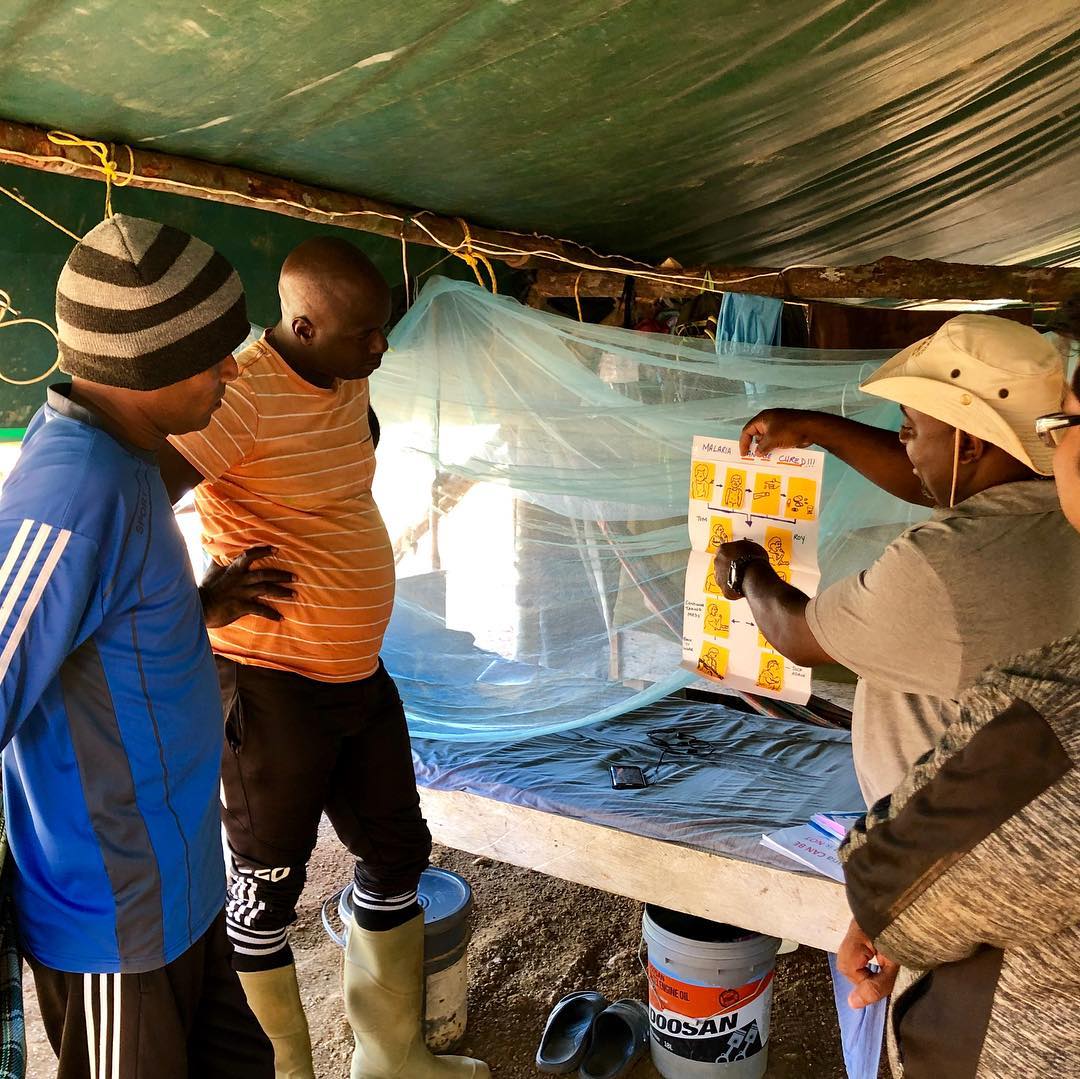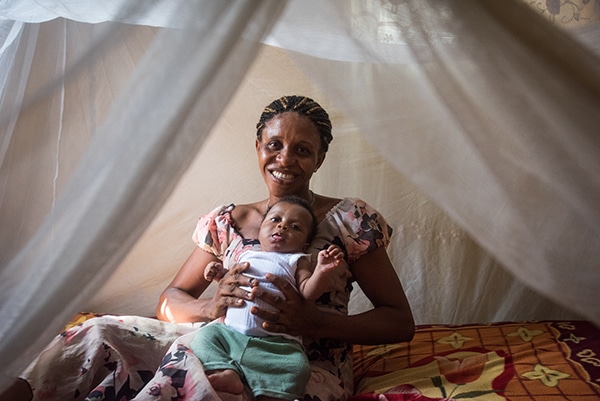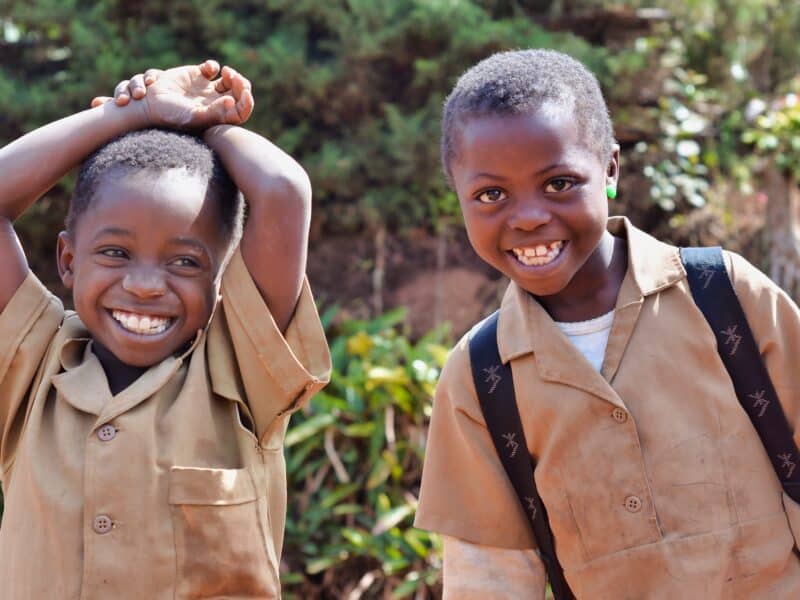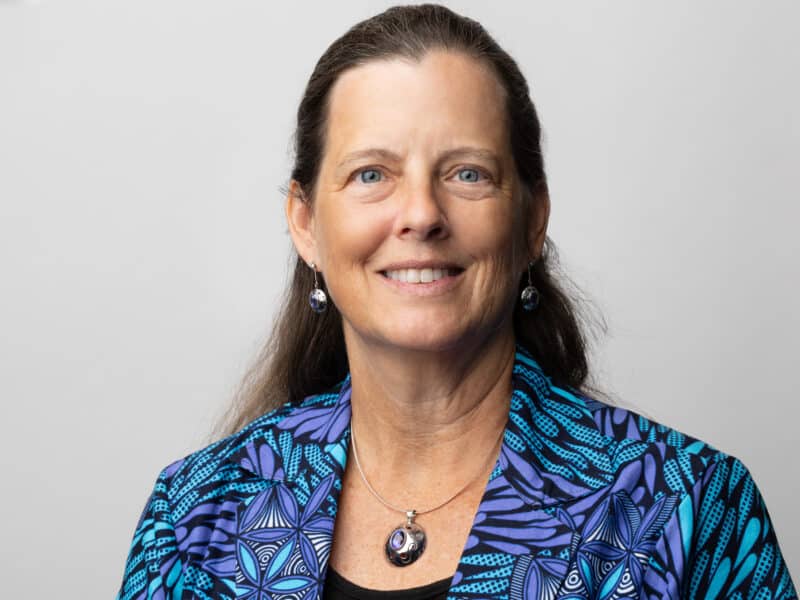In Guyana’s remote interior, where gold mines and dirt roads mark the landscape and health facilities are few and far between, one of the biggest threats to the miners comes from one of the smallest sources: Mosquitoes that carry deadly malaria parasites.
In this small South American country wedged between Brazil and Venezuela, the Ministry of Public Health has been working to help those who are sickened by malaria by bringing testing and treatment to them, training volunteers at or near the mines to rapidly diagnose and provide the medication needed to get well.
But simply having the testing and treatment available isn’t enough. First, miners need to know that those services are even available to them. And there are many factors at play that influence whether or not miners actually go for testing and adhere to the approved treatment for malaria, which kills more than 435,000 people around the world each year.
The Johns Hopkins Center for Communication Programs-led, USAID-funded Breakthrough ACTION project was brought in to bridge the gap. Members of the team have just returned from a three-week trip to Guyana to work with officials from Guyana’s Ministry of Public Health, miners, mining associations, camp managers and volunteer malaria testers to generate ideas for how to tackle the problem, design low-tech prototypes to refine their ideas and test their concepts.
“What we found during this human-centered design process is that what didn’t work was just as important as what did,” says CCP’s Jennifer Orkis, who helped co-facilitate the process. “We had three to five times as many ideas that we tossed out after the miners helped us to understand what would and wouldn’t work to get people properly tested and treated for malaria in Guyana.”
Says CCP’s TrishAnn Davis: “People are really hungry for information about malaria and this is a huge opportunity to get it to them.”
This was the team’s second trip to Guyana. They spent three weeks last fall talking to more than 100 people in the field to gain a deep understanding of the issue. They found that miners typically didn’t perceive malaria as a great risk, that many didn’t fully understand malaria and how to prevent it and that many people self-diagnosed and self-medicated when they got sick, using unapproved over-the-counter products or traditional “bush” medicine, which often led to re-occurrence. Many didn’t know that they could get free rapid diagnostic test and approved treatment nearby, a convenience that could help them get healthy and back to work quickly.
“You can’t prevent it,” one miner told them, “malaria just comes.”
Another major finding: Miners often stop treatment as soon as they feel better, meaning the parasite remains in the body and can continue to make them sick. One of the most common species of the malaria parasite in the region (P. vivax) requires a 14-day course of medication to be completely cleared from the body.
On the most recent trip, the social and behavior change concepts bandied about were everything from writing radio jingles to creating a streamlined referral system to developing a mobile reporting app (which trained testers quickly rejected).
Some of the simplest ideas, the team found, could end up being most successful: The design of brightly colored signs that announce “Free Malaria Testing and Treatment Here” and simple certificates that can be given to those trained to do rapid diagnostic tests to increase visibility of the services, and boost the confidence of both testers and miners in the process.
One of the more complex ideas included the creation of electronic wristbands pre-programmed to remind people when it’s time to take their malaria medicine coupled with medication pre-packaged in flexible, waterproof packets labeled with the day and time each should be taken, depending on the strain of malaria. Drawn on each day’s packet is a picture of the body roughly showing the proportion of parasites still in the body, a reminder, they hope, to take the medication until it’s gone. It’s high-tech and low-tech, for those with higher and lower literacy levels.

The Breakthrough ACTION team discusses malaria with miners.
When team members took their ideas back to the miners for input, the wristband was made from rolled up paper, but the miners got the idea (they loved it!). Seeing the ideas in such an obviously early form made it easier for them to be brutally honest about what they saw – and helps the team get a much better picture of what might actually work, Orkis says.
The miners and volunteer testers they spoke to loved being asked for their opinions, says CCP’s Sean Wilson, a senior program manager based in Guyana. “We had our own ideas about what might work well, but sometimes it didn’t hit home for them,” he says.
For example, the team suggested volunteer testers be called “malaria fighters,” but “they said a malaria fighter is a person who has malaria and is fighting the disease but I am a tester. That input was very valuable to us.”
The team will take some of the ideas and, working with the ministry, further refine which ideas are feasible, design better prototypes and run small pilot projects with those. The team will also develop a creative communication campaign to help miners understand how malaria is spread and how it can be managed, motivating behavior change through a variety of channels. All of this work will be done to ensure the interventions have the desired effect.
“Many of the people we spoke to didn’t understand that they could be cured if they took all of their medicine. Many believed that malaria just sticks around and then re-emerges or ‘raises up’,” Orkis says. “It was eye-opening for them to see it doesn’t have to be that way. This is something we want everyone to hear.”





